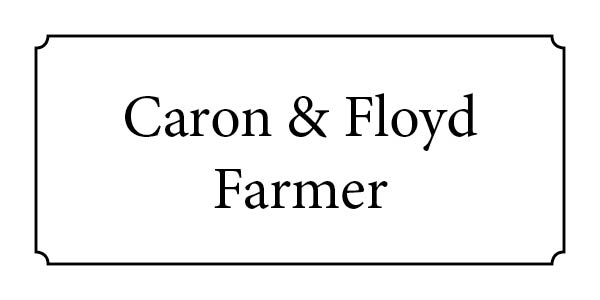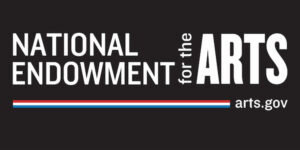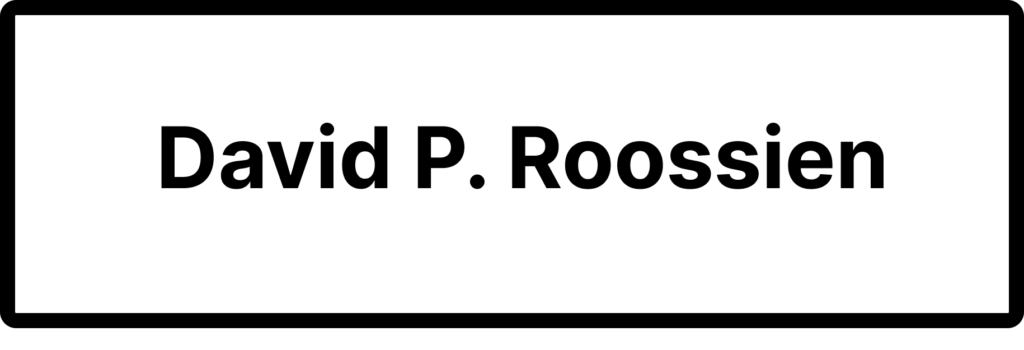Pulling Out the Stops


Pulling Out the Stops
Concert Sponsor

Program
Saturday September 24, 2022, 7:30 p.m.
Jack H. Miller Center for Musical Arts, Hope College
Concert Overture No. 2
Florence Price (1887-1953)
Symphony No. 2, Op. 30, “Romantic”
Howard Hanson (1896-1981)
- Adagio; Allegro moderato
- Andante con tenerezza
- Allegro con brio
Intermission
Camille Saint-Saëns (1835-1921)
Symphony No. 3, op. 78, in C minor, “Organ Symphony”
PART I
Adagio - Allegro moderato
Poco adagio
PART II
Allegro moderato - Presto
Maestoso - Allegro
Tickets: Adults - $25, Students through college - $5
Season Ticket Series
The concert opens with Florence Price’s “Concert Overture No. 2.” This piece is a beautiful meditation on three spirituals, “Go Down, Moses, Ev’ry Time I Feel the Spirit,” and “Nobody Knows the Trouble I’ve Seen.” Price was an American composer in the early 1900s whose music has recently been discovered and celebrated. The orchestra will continue with another American work, the “Romantic” Symphony by Howard Hanson. Full of sweeping melodies, nostalgic tenderness, and majestic brass, this work captures a hopeful American spirit. The concert will conclude with the well-known “Organ Symphony” by Camille Saint-Saens.
The stage will be full with a large orchestra, harp, colorful percussion, and a piano played by two people, as well as the majestic Casavant organ in the concert hall played by Peter Kurdziel. The concert will substitute soloist Peter Kurdziel performing on the Saint-Saens Organ Symphony as the artist Huw Lewis is unable to perform due to covid-related illness and two broken fingers.
Peter Kurdziel has been the Director of Music at the Basilica of St. Adalbert in Grand Rapids, Michigan since August of 2010. He earned degrees in organ from Hope College where he was a student of Huw Lewis and the University of Notre Dame where he was a student of Craig Cramer. He earned the Doctor of Musical Arts from the University of Illinois (Urbana-Champaign) where he was a student of Dana Robinson. In addition to the organ, Peter has also studied voice, conducting, harpsichord, and theology at the graduate level. He is the past dean of the Grand Rapids and Muskegon-Lakeshore Chapters of the American Guild of Organists. He has also served on the executive boards of the Grand Rapids Chapter of the National Pastoral Musicians and the West Michigan Symphony.
The concert opens with Florence Price’s “Concert Overture No. 2.” This piece is a beautiful meditation on three spirituals, “Go Down, Moses, Ev’ry Time I Feel the Spirit,” and “Nobody Knows the Trouble I’ve Seen.” Price was an American composer in the early 1900s whose music has recently been discovered and celebrated. The orchestra will continue with another American work, the “Romantic” Symphony by Howard Hanson. Full of sweeping melodies, nostalgic tenderness, and majestic brass, this work captures a hopeful American spirit. The concert will conclude with the well-known “Organ Symphony” by Camille Saint-Saens.
The stage will be full with a large orchestra, harp, colorful percussion, and a piano played by two people, as well as the majestic Casavant organ in the concert hall played by Peter Kurdziel. The concert will substitute soloist Peter Kurdziel performing on the Saint-Saens Organ Symphony as the artist Huw Lewis is unable to perform due to covid-related illness and two broken fingers.
Learn more about the music…
We will be hosting not only the Classical Chat series at Freedom Village, but also Pre-Concert Talks! Details below:
Classical Chats at Freedom Village: These informative and fun talks are led by Johannes Müller-Stosch and take place at 3:00pm on the Thursday before each Classics concert. (Freedom Village, 6th Floor Auditorium, 145 Columbia Ave.)
Pre-Concert Talks: These talks, led by Johannes Müller-Stosch and Amanda Dykhouse, will be online this year under the "Pre-Concert Talk" Tab. There are opportunities for you to ask questions about upcoming programs on that tab. We look forward to resuming live Pre-Concert Talks when the pandemic lessens.
New to the Symphony? Check out the Frequently Asked Question page…
Parking Map at the Miller Center
Holland Symphony Orchestra will reserve and monitor Lot 40 for handicapped parking. The faculty parking lots are available for parking after 5pm

Concert Overture No. 2
Florence Price
Born: Little Rock, Arkansas, April 9, 1887
Died: Chicago, Illinois, June 3, 1953
Written: 1943
Approximate duration: 15 minutes
Instrumentation: 3 flutes, piccolo, 2 oboes, English horn, 2 clarinets, bass clarinet, 2 bassoons, 4 French horns, 3 trumpets, 3 trombones, tuba, timpani and percussion (bass drum, cymbals, suspended cymbal, snare drum), harp, and strings
Florence Price was born in Little Rock, Arkansas. Her mother was a music teacher and her father was the only African-American dentist in the city. Even though Little Rock had lots of racial issues, the family was well-respected. Florence’s mother guided her early musical studies. At age four she performed for the first time on the piano, and published her first composition at age eleven. After graduating at the top of her class from high school she attended New England Conservatory of Music in Boston, majoring in organ and piano teaching. She also studied composition.
Upon her graduation in 1906, Price taught at Clark Atlanta University, becoming head of the music department. She eventually got married and moved back to Little Rock, where she raised two daughters. She had trouble finding work in that segregated town. After a series of racial incidents, including a lynching in 1927, the Price family moved to Chicago. Price met a lot of other musicians in Chicago and began her composition career. She also worked for a time as an organist for silent film showings. She studied with many of the city’s leading teachers, spent time at Chicago Musical College, University of Chicago, and American Conservatory of Music, and became part of the Chicago Black Renaissance. Ultimately she composed over 300 works. In 1932 she became the first African American woman to have a work played by a major orchestra when the Chicago Symphony played her first symphony.
After she died, much of Price’s work fell out of favor as new styles emerged. A lot of her music was lost until the discovery of over 200 pieces in an abandoned house in 2009 outside St. Anne, Illinois, that Price used as a summer home late in her life. In recent years many of her works have been re-published or published for the first time. Orchestras, in an effort to recognize underrepresented composers, have helped audiences discover and enjoy her delightful music.
Price’s music draws heavily on the American musical sounds surrounding her. She was a devoted Christian and used a lot of spirituals–both their melodic sounds and rhythms–in her symphonic pieces. This is true of her “Concert Overture No. 2,” written in 1943. This piece, one of the compositions found in the dilapidated house, features “Go Down Moses,” “Ev’ry Time I Feel the Spirit,” and “Nobody Knows the Trouble I’ve Seen.”
To listen to the Price, click here.
Symphony No. 2, Op. 30 “Romantic”
Howard Hanson
Born: Wahoo, Nebraska, October 28, 1896
Died: Rochester, New York, February 26, 1981
Written: 1930
Premiered: 1930, Boston Symphony Orchestra
Approximate duration: 28 minutes
Instrumentation: 2 flutes, piccolo, 2 oboes, English horn, 2 clarinets, bass clarinet, 2 bassoons, contrabassoon, 4 French horns, 3 trumpets, 3 trombones, tuba, timpani and percussion (bass drum, cymbals, suspended cymbal, snare drum), harp, and strings
Hanson was born in Wahoo, Nebraska, to Swedish immigrants who wanted him to become a Lutheran pastor. His mother was his first music teacher, and he excelled so much in music that he decided to make it his career. He studied at the Julliard School of Music and Northwestern University, and took a teaching position at a college in California when he was only nineteen years old. In 1921, he was the first American composer to win the prestigious Prix de Rome and enter the American Academy in Rome. After returning to the United States, he met George Eastman, the founder of Kodak, while he was conducting at the University of Rochester. Eastman was fabulously wealthy and wanted to start a music school at the University. He asked Hanson to be its first director. Hanson accepted, and remained at the University of Rochester’s Eastman School of Music for forty years as its director and composer-in-residence. During that time, he composed frequently, but he also encouraged other composers, conducting over 1,500 new compositions by approximately 700 students. Hanson also instituted an annual American Music Festival where he conducted the premieres of works by composers such as Samuel Barber, Aaron Copland and Virgil Thomson. In these roles Hanson influenced more American composers in the twentieth century than any other teacher or conductor. He was justly called the “Dean of American Composers” and became a spokesman for music in America.
As a composer, Hanson's style is romantic, tonal, and rich in the low instrument registers. He departed from many of his contemporaries, including Debussy, Stravinsky, and Schoenberg, who were challenging the traditions of Western music. With the influence of his Scandinavian background and his deeply felt concern to create an “American” voice in the world of music, Hanson decided that experimentation and dissonance were not for him. Instead he created appealing works based on traditional harmony and melody. Hanson’s most significant contribution to the American repertoire was his cycle of seven symphonies, which rank among the most widely appreciated American works in the genre.
The Symphony No. 2 is Hanson’s best-known and most frequently performed work. The Boston Symphony gave the world premiere of the work in 1930 as part of the orchestra’s 50th Anniversary. Hanson gave the symphony the subtitle of “Romantic” to distinguish it from much of the experimental music by other composers that was being performed at the time. As the nickname implies, Hanson intended the symphony to be unabashedly beautiful and emotional. “I do not believe that music is primarily a matter of intellect," he said, "but rather a manifestation of the emotions. I have, therefore, aimed in the Symphony to create a work that was young in spirit, lyrical and romantic in temperament, and simple and direct in expression... definitely warm-blooded music.”
The entire symphony is based, harmonically and melodically, upon only one theme, which reappears in different guises throughout all three movements. Those who are acquainted with Interlochen’s summer camp will recognize this theme immediately. Hanson was intimately associated with this music camp and “donated” the principal theme of his Second Symphony to the camp as the “Interlochen Theme.” The first movement starts slowly and gently with an introduction that is mysterious and grand. The sound dies, then leads to a faster section interspersed with rich melodic writing and sweeping fanfares interrupted by lyrical passages. Ending with the primary theme in the dark key of D flat, the music leads directly to the tender slow movement and the clarity of C major. Hanson called this tender melody “a song without words.” It is interrupted by a brass interlude featuring two main tunes from the first movement. The opening tune returns, this time sounding more like a hymn. The Finale is a grand “summing up.” This energetic movement’s opening idea is derived directly from the slow movement’s main melody. The music is driven forward with great excitement; a triumphal statement of the theme by the brass finishes the piece in a grand manner.
To listen to the Hanson, click here.
Symphony No. 3 in C Minor, "Organ"
Camille Saint-Saëns
Born: Paris, 9 Oct 1835
Died: Algiers, 16 Dec 1921
Written: 1883-1886
Premiered: Philharmonic Society of London, 1886
Approximate duration: 36 minutes
Instrumentation: 2 flutes, piccolo, 2 oboes, English horn, 2 clarinets, bass clarinet, 2 bassoons, contrabassoon, 4 French horns, 3 trumpets, 3 trombones, tuba, timpani and percussion (bass drum, cymbals, suspended cymbal, triangle), piano 4 hands, organ, and strings
Music donated by Dorothy and Judy Voss
As a child, Camille Saint-Saëns displayed a prodigious talent that would have rivaled Mozart’s. He started piano lessons at age two and composing at three. At age ten he dazzled a Parisian audience with an extremely difficult piano program at his formal debut. As an encore he offered to play any of Beethoven’s thirty-two piano sonatas from memory. He was as skilled on the organ as he was on the piano, and served as the organist of Paris’ most prestigious church, La Madeleine, for nineteen years.
Saint-Saëns’s third and final symphony was commissioned by the Philharmonic Society of London in 1883. He did not give the symphony its nickname, “Organ,” which is misleading. At that time several French composers wrote large-scale solo pieces that they called “Organ Symphonies.” Saint-Saëns did not consider the organ to occupy a solo role in this symphony; rather, he considered it an additional orchestral color. The organ’s first entrance, about ten minutes into the piece, is so subtle that it is easy to miss. The symphony premiered in London in May,1886, with the composer conducting. He also played Beethoven’s Fourth Piano Concerto in the first half of the program. Saint-Saëns reported on the concert: “The Symphony enjoyed a colossal success. [It was] “spiced up by just enough opposition to make the success more intense.” Saint-Saëns then dedicated the new piece to Franz Liszt, whom he greatly admired.
Saint-Saëns provided these comments on the structure of his symphony: “This symphony is divided into two parts. Nevertheless it embraces in principle the four traditional movements, but the first is altered in its development to serve as the introduction to the Adagio, and the scherzo is connected by the same process to the finale.” After a brief introduction, Saint-Saëns introduces his core theme. In a process of “thematic transformation” that he had learned from Liszt, he builds almost every melody of the entire piece from this initial restless theme. Later in the movement the violins present a rocking, tranquil melody that gives listeners a rest from the opening, rushing figure. The nervous music flows directly into the beautiful slow movement, which Saint-Saëns described as an “extremely peaceful, contemplative theme.” Next the energetic scherzo alternates with two contrasting trios. In the second trio, a “grave and austere” slow theme emerges from the low brass. Saint-Saëns wrote: “There is a struggle for mastery, which ends in the defeat of the restless diabolical element.” The music builds and quiets, and in a moment of suspense, the organ enters with a hair-raising C Major chord. The strings play a chorale based on a brilliantly transformed version of the opening, restless melody, accompanied by glittering arpeggios played by two pianists (a theme that was featured in the movie Babe). After the organ and brass have their turn, string melodies, brass fanfares, and fugues take the audience to the triumphant ending.
To listen to the Saint-Saëns, click here.
Peter Kurdziel, Organ
Peter Kurdziel has been the Director of Music at the Basilica of St. Adalbert in Grand Rapids, Michigan since August of 2010. He earned degrees in organ from Hope College where he was a student of Huw Lewis and the University of Notre Dame where he was a student of Craig Cramer. He earned the Doctor of Musical Arts from the University of Illinois (Urbana-Champaign) where he was a student of Dana Robinson. In addition to the organ, Peter has also studied voice, conducting, harpsichord, and theology at the graduate level. He is the past dean of the Grand Rapids and Muskegon-Lakeshore Chapters of the American Guild of Organists. He has also served on the executive boards of the Grand Rapids Chapter of the National Pastoral Musicians and the West Michigan Symphony.
To listen to the pre-concert talk, click here.
- This event has passed.
Details
- Date:
- September 24, 2022
- Time:
-
7:30 pm - 9:30 pm
- Cost:
- $25
Venue
- Jack H. Miller Center for Musical Arts at Hope College
-
221 Columbia Ave.
Holland, MI 49423 United States + Google Map
Organizer
- Holland Symphony Orchestra






















